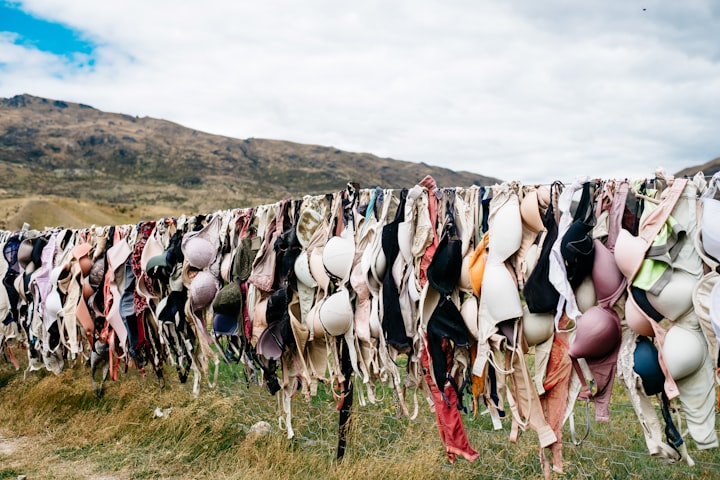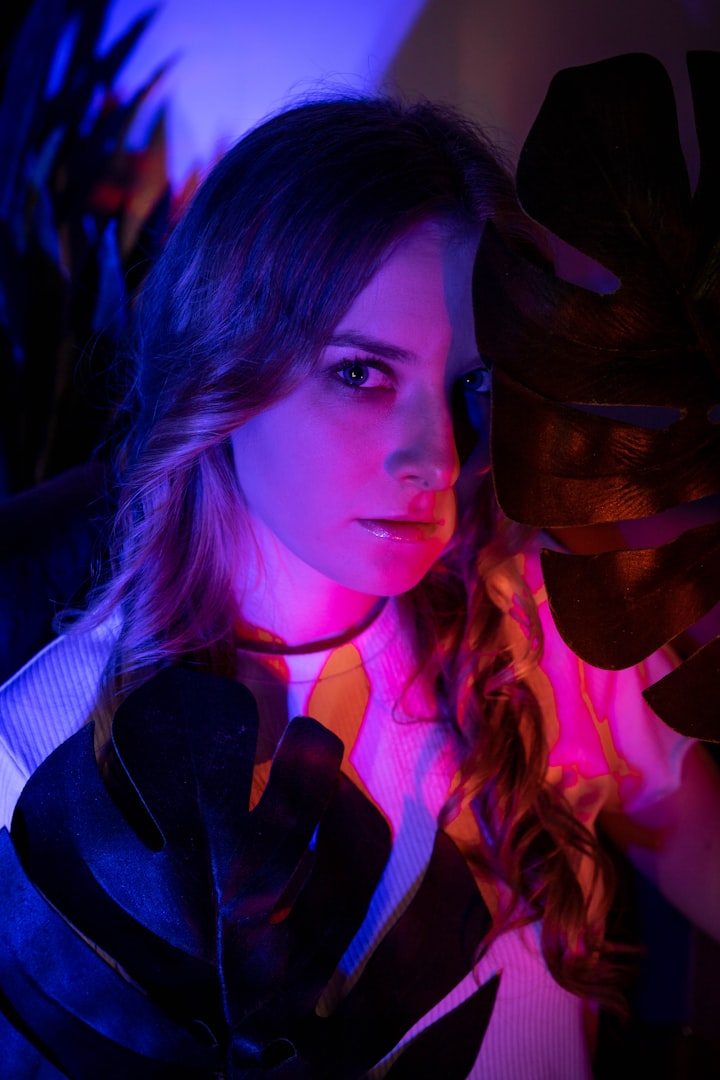My Fourteen-Year-Old Daughter Won't Wear a Bra
And I'm okay with it--mostly

My mother took me shopping for a bra at the first indication that breasts were budding beneath my sweater. The fact that she noticed was embarrassing enough — I’m not sure how I made it through the actual shopping trip.
I remember being in a department store dressing room when the older saleswoman popped in unannounced to “help” me while my mother waited patiently outside the curtain. I agreed to the first thing I tried on in an effort to get the heck out of there.
I went home that day with two bralettes. They featured dainty pink roses nestled at the point where the cups met and lace along the straps. I use the word “cups” loosely — these training bras offered no support or padding and basically acted as a more grown-up version of a cotton undershirt.
Underlying that experience was the unmistakable feeling that I was somehow at fault. My body was doing things I had no control over and now I had to wear a special kind of clothing because of it.
It was clear that the bralettes were not for physical support but rather an effort to smooth over and cover up the fact of my nipples and areolas. The message was that those parts of my body needed to be hidden. My mom taught me through example to wear the bras all the time, even when I slept.
My breasts could not be trusted to be let loose on their own!
Contrast that experience to buying my own daughter’s first bra. We headed to a popular preteen clothing store and she picked out a multi-colored polka-dotted bra. At my insistence, she also got a practical white bra. She did not let me help her in any way, shape, or form and yelled at me to get out of the dressing room when I tried to peek.
I soon realized that she viewed the bras as just another accessory rather than some right of passage into womanhood or something to be concealed beneath her clothes.
She let her bra straps show, she wore brightly colored bras under light-colored shirts, she wore a sports bra as a shirt with an partially unzipped jacket.
Over the next four years, we made many more trips for bras. While I had stayed in a size A cup bra from age 11 to age 28, my daughter steadily progressed through the cup sizes. By the time she turned 14 at the end of eighth grade, she was wearing a size 32D.
That fall she started high school and soon I noticed something different. As she was getting ready to head to school one morning, I noticed she seemed a little “bouncier” than usual.
“Honey, are you wearing a bra?”
“No.”
“Well, shouldn’t you put one on?’
“Why?”
“Because you are going to school. Go put on a bra.”
“I don’t like wearing bras. It’s more comfortable this way.”
“Isn’t it against the dress code?”
“They can’t tell me to wear a bra. That’s none of their business.”
I let it go, I told myself, She’s wearing a sweatshirt; it isn’t that noticeable; this is just a phase.
I asked a friend without children about it, hoping to get an unbiased opinion. The friend reassured me that she herself had stopped wearing a bra for about six months but then had gone on to live a perfectly respectable life.
So I relaxed a bit and tried to ignore what I believed was my daughter’s attempt to get under my skin. Soon she expanded her bralessness to all types of clothing, not just sweatshirts. She went bra-free under t-shirts, halters and dresses. She just didn’t see the point in wearing a bra.
Despite my resolve to feign indifference, I brought up the subject probably once a day. My unsolicited comments ran the gamut from concern “That looks uncomfortable, you’d probably feel better wearing a bra” to statements of fact “That’s a white shirt — your nipples will show.” Often I would end with a command “Your grandmother is coming over, put on a bra for dinner.”
Her counter arguments remained the same:
“This is more comfortable.”
“There’s nothing wrong with my breasts, I’m not ashamed of them.”
“If people don’t like it, they don’t have to look.”
I became increasingly uncomfortable with the message I was sending during each exchange. I didn’t like the words that were coming out of my mouth.
What exactly was the problem with not wearing a bra? What bothered me about it? Did I really want my daughter to feel ashamed of her body? Did I want her to consider her breasts a burden? Did I want her to feel as if she had done something wrong by simply growing up?
Normally, I would tell any woman that she, and she alone, has the right to decide what to do with her body. Yet here was my daughter doing what made her feel comfortable and confident, and I was trying to stop her.
I should have been proud of her for standing up to me and society. I should have congratulated her on finding her voice. Instead I was scared of what others might think of her. I was scared of her not being taken seriously. I was scared of her being sexually harassed by boys at school.
Thinking back on my life with breasts, I recall many times I felt shame either because of the messages I internalized, or how others reacted to my body.
When I was in my twenties, I “flashed” the crowd at Mardi Gras, quickly lowering my shirt when I heard a rude comment from the crowd of drunken men.
When my daughter was a baby, I was too uncomfortable with pulling my breasts out in public to breastfeed her.
When I was in the fourth grade, a more physically developed girl at school made fun of my training bra.
When I was in my thirties and my once firm B cup breasts sagged after pregnancy and breastfeeding, I immediately made an appointment with a plastic surgeon.
Just three years ago, in my forties, I fell asleep by a pool in Las Vegas and a hotel employee loudly woke me to announce that my bathing suit had slipped and my areola was showing. Even by Vegas standards this was unseemly (and as it turns out, illegal).
As it often happens in parenting, I realized my own emotional baggage and internalized messages were responsible for my attitude toward my daughter’s decision.
In short, this wasn’t my daughter’s problem. It was mine.
So I dropped it. I no longer say anything about her underclothes or lack thereof. She sometimes wears a bra. Sometimes she doesn’t. But what is important is that she is learning on her own when she is comfortable without a bra and when she wants to wear one.
And that is the way it should be — not only with bras but with everything in life. Isn’t that what we truly want for our children? The ability to choose that which serves them and the ability to discard the nonsense.
My daughter has the right to feel comfortable in our her own skin and expect that others will respect her decision. If they don’t, she has the right to call them out on their attitude or ignore them altogether.
Now when I pick my daughter up from school and she gets in the car, I simply ask her how her day was, and she shares a story that has nothing to do with her body or her breasts. And our relationship is better for it.
About the Creator
Alecia Kennedy
Asking the big questions, finding the small answers.






Comments
There are no comments for this story
Be the first to respond and start the conversation.